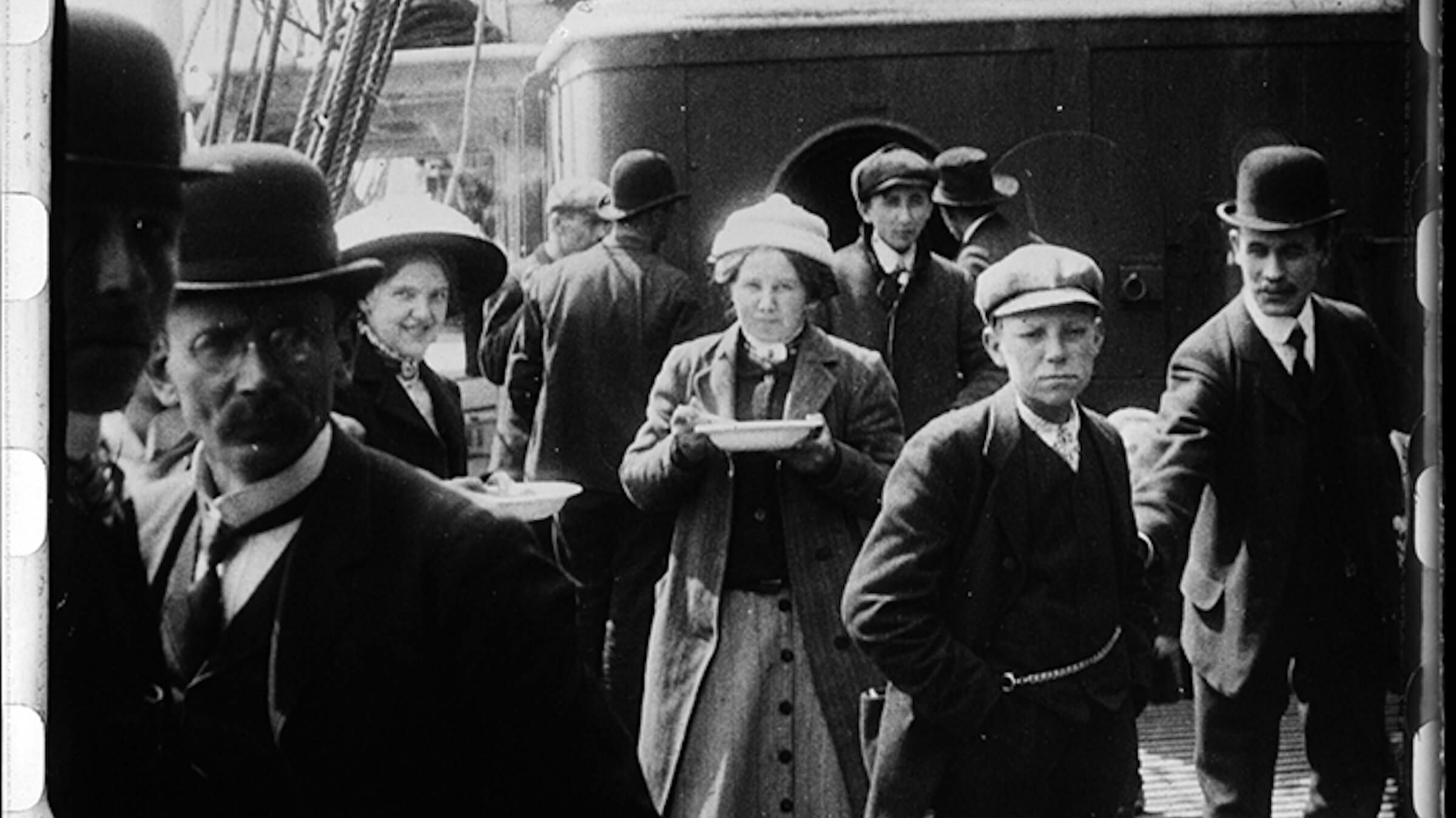This feature was published in conjunction with the screening of Fragment of an Empire at SFSFF 2018
While silent cinema has its share of silk-hatted swells, champagne, and cotillions, the working class at the bottom of the income pyramid is by no means neglected. Miner strikes, child labor, workplace safety disasters, unions (pro and con), and even socialism are featured on the silent screen. Cooks, servants, and servers prepare and distribute fine meals they could never afford to eat, workers construct fine homes they would never be allowed to enter—not by the front door anyway—and silent cinema showcases their struggles, with or without a happy ending tacked on.
THE INDUSTRY ON INDUSTRY
While overtly socialist films were not the norm in the American film industry, there are notable examples. Upton Sinclair, who declared in 1923 that movies were in the hands of capitalists and vile beyond words, was pleased enough with the 1914 movie adaptation of his novel The Jungle, which depicts the meat-packing industry in stomach-churning detail, the solution a cooperative commonwealth.
Dust (1916) is overtly pro-labor, opening with factory workers symbolically coining their lives into money to support their employer’s lavish lifestyle. The film concludes with safety legislation being passed and the evil owner dying in a fire at his own factory. D.W. Griffith solved the problem of industrialist greed by drowning a particularly avaricious specimen in his own product in A Corner in Wheat (1909). William S. Hart took a more redemptive approach in his 1921 drama The Whistle. Hart plays a factory worker whose son is killed by unshielded equipment, shielding that Hart had begged the wealthy owner to install only that morning. After the owner sees reason, the film ends with an image of the blowing of the workday whistle. Has anything really changed?
SCRAPING BY
City streets can be a harsh reality for the poor, and many silent films explore the poignant side of poverty, braving rain, sleet, and snow to scrape out an urban living. Mother Krause’s Journey to Happiness shows an impoverished Berlin, its streets built by the working class for the convenience of automobiles they do not own. The sidewalks are lined with buskers, newspaper sellers, and people sifting through discards of those higher up on the pyramid in hopes of finding something useful: a toy, a camisole … The title character of The Little Match Girl (1902) is not fortunate enough to find even a scrap of food and, true to the Hans Christian Andersen story, freezes to death as she ignites her wares.
Street-vending and immigration often went hand-in-hand in American productions. Universal’s His People (1925) features Rudolph Schildkraut as an educated man who must support his family in the New World by selling pattern pieces from a pushcart. A decade earlier, The Italian, produced by Thomas Ince, shows George Beban as a gondolier turned corner-shoe-shine. In both cases, the new Americans are portrayed as hardworking, sympathetic breadwinners whose lives teeter on the edge of tragedy or fall straight in. On the other side of the Atlantic, productions like the 1910 Swedish film Emigranten tried to warn prospective emigrants that the New World was not all it was cracked up to be.
IN SERVICE
A bit further up the food chain, the saucy maid and the cunning valet show up time and again in silent film, but they were never so charming as when Ernst Lubitsch was directing. The Oyster Princess (1919) features a gentleman’s personal gentleman who marries his master’s intended by proxy but isn’t above trying to wheedle his way into the honeymoon suite. Warning Shadows (1923) is a darker take with Fritz Rasp’s butler helping to tie his employer’s wife to a table where she is stabbed to death—or was it all a dream?
While the servants have the advantage in some films, a more realistic look at the imbalance of power between domestic and employer provides the tragic centerpiece of The Peasants’ Lot (1912). Aleksandra Goncharova plays a country girl forced to take a job as a maid then is raped and paid off by her employer. She returns home to a sympathetic father but the trauma of her experience is not easily forgotten.
PINK COLLARS
Gloria Swanson, Mary Pickford, Clara Bow … every Hollywood actress worth her salt—and even a few men, most notably Harold Lloyd in 1923’s Safety Last!—took a turn behind the notions counter, working the lingerie department or selling dime-store novelties. The setting was often used as an excuse for a romance with the boss or, better, the boss’s son, especially if he resembled Antonio Moreno or Buddy Rogers. Finding a job in the first place was sometimes the main challenge for women entering the job market. Constance Talmadge employs subterfuge in Good References—borrowing another job seeker’s letter of recommendation—and, you guessed it, ends up with a proposal of marriage from her employer.
The growing beauty industry of the silent era saw everyday men and women paying to look ravishing from their heads to the tips of their fingers, and the flirty manicurist was a staple of the movies. As was the case for retail workers, office staff, and social secretaries, marriage was usually the end game for these fashionable toilers. Manicurists marry their rough-diamond suitors in both Mantrap (1926) and Cottage on Dartmoor (1929) with the former ending in a battle of the sexes (Flappers-1, Trappers-0) and the latter turning into an unintentional advertisement for safety razors.

